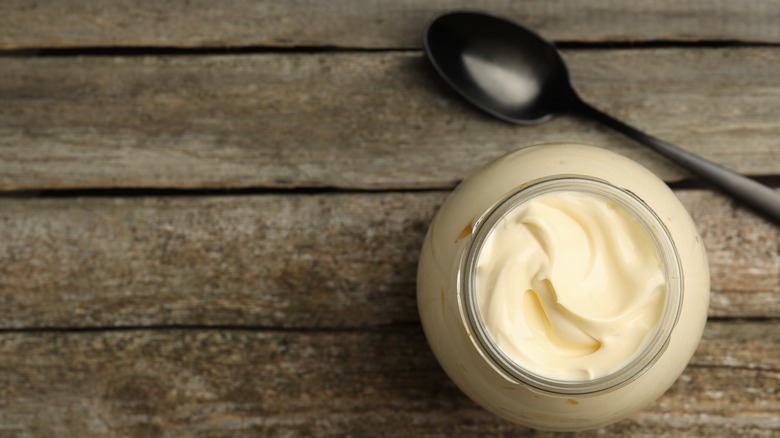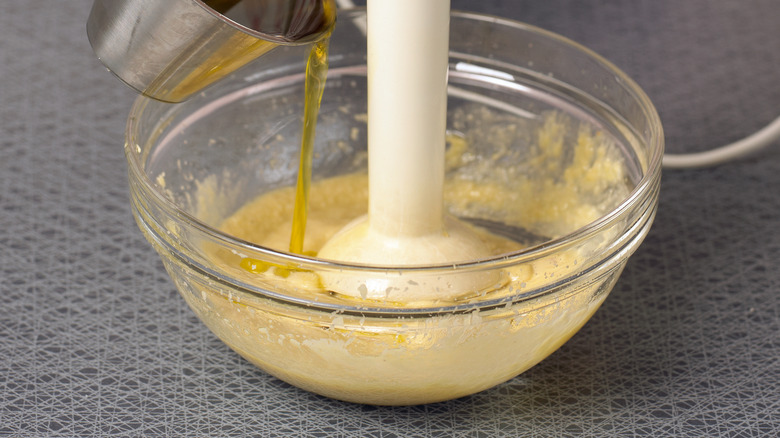The Reason Your Blender Mayo Didn't Turn Out Smooth
Homemade classic mayonnaise is way better than store-bought mayonnaise. Since you're in charge of the recipe, you can guarantee freshness and quality. Plus, it's super inexpensive to make, and quite simple to execute — but only if you've mastered the proper technique.
A perfect condiment to top sandwiches and burgers or used as a secret ingredient for a fluffy cake, mayonnaise is a jack-of-all-trades. With a smooth and creamy texture and a deliciously rich taste, the pearly sauce is surprisingly simple in its ingredients list. Using just an emulsion of eggs, oil, and a bit of acidity from lemon juice or vinegar to brighten and bind, you can even venture into funkier renditions, like candied jalapeño mayo.
A good mayonnaise should be thick and creamy, and it can be a bit humbling when your homemade version turns out thin and greasy. Starting with the freshest — and room temperature! — ingredients is important, notes Allrecipes. However, the culprit behind a split mayo likely has more to do with your oil. Neutral oils like vegetable, canola, or avocado oils work best in emulsions, thanks to their lighter consistency and mild flavors (via MasterClass), but it's how you incorporate them into your recipe that can make all the difference.
Patience is a virtue when making homemade mayo
Combining two ingredients that don't usually mix can be tough, but it's not impossible when they're properly emulsified. According to Cook's Illustrated, the oil breaks down into tiny droplets when mixed with a watery base (lemon or vinegar), however, the lecithin in the egg yolk acts as an emulsifying agent to form barriers around the oil droplets, allowing them to blend with the acid and stabilize the mixture.
That said, pouring in oil too quickly (and without contact with yolks and acid) doesn't allow an emulsion to develop. Instead, it causes your blender mayo to become an oily mess. In order to create a successful emulsion, Bon Appétit recommends initially adding oil to your mayonnaise drop by drop, and then slowly increasing the quantity to allow the mixture to emulsify and thicken as it should. The key here is patience!
But if you've rushed through your mayonnaise-making and are left with a runny mayo, all hope isn't lost. According to Serious Eats, you can add a splash of your acidic ingredient to a clean bowl and slowly start to whisk in your broken mayo one spoonful at a time, until it stabilizes and reaches a smoother consistency.

